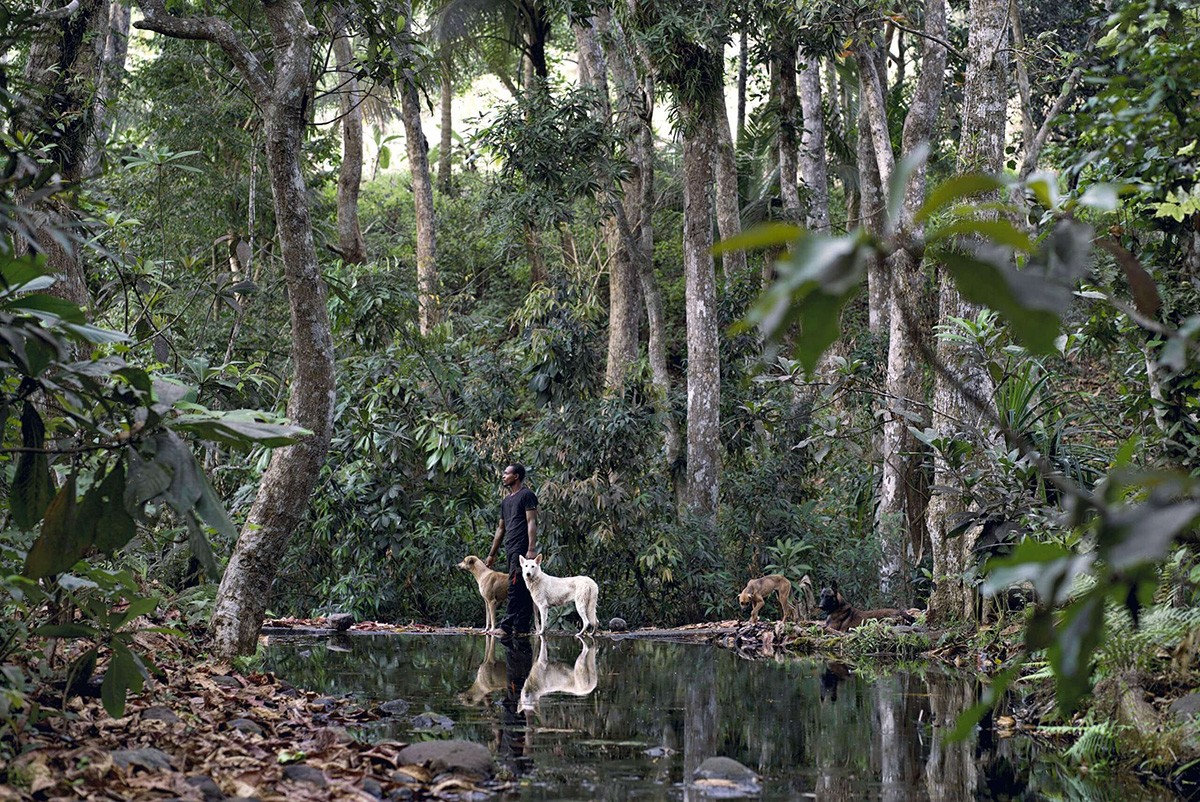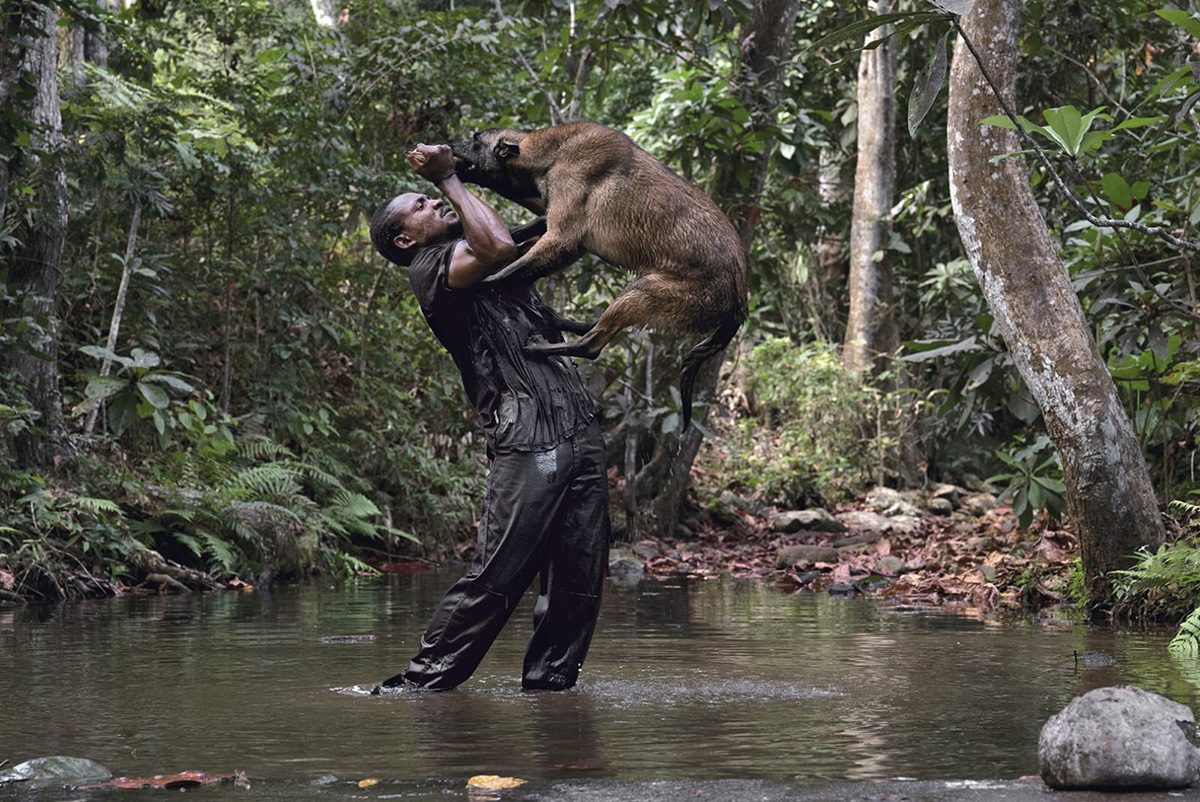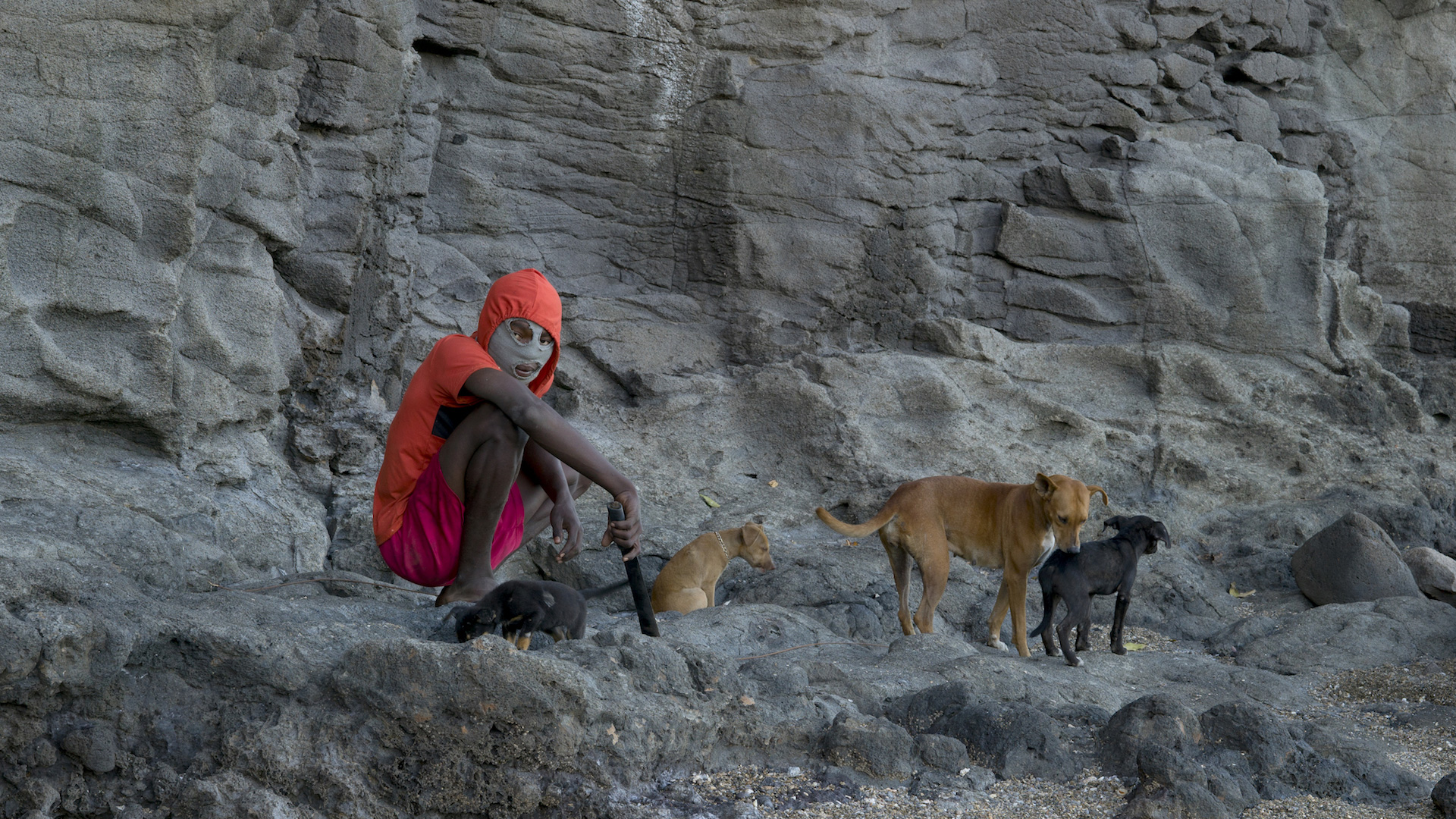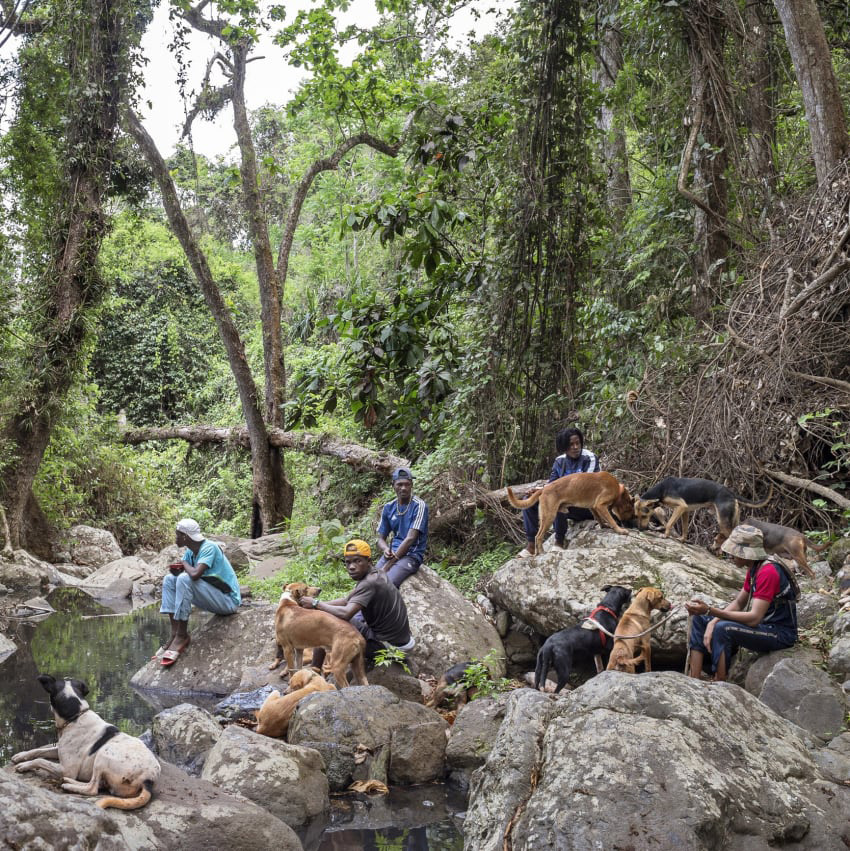PHOTO: Laura Henno-Grande Terre
 All over the world Laura Henno is both developing a seemingly documentary aesthetic which transcends genre codes, and working on deeply ethical research to do with lives which are marginal, isolated and peripheral. Laura Henno’s œuvre is developing within an incarnated vision of youth and interstice, through the figure of the young migrant, on the one hand, and makeshift communities on the other—teenagers, isolated minors, young illegal immigrants, squatters, and people living in wretched poverty, all represent the artist’s favourite subjects as she explores the notions of not-belonging, displacement, margins, and the strategies of resistance and survival which are constructed in such communities.
All over the world Laura Henno is both developing a seemingly documentary aesthetic which transcends genre codes, and working on deeply ethical research to do with lives which are marginal, isolated and peripheral. Laura Henno’s œuvre is developing within an incarnated vision of youth and interstice, through the figure of the young migrant, on the one hand, and makeshift communities on the other—teenagers, isolated minors, young illegal immigrants, squatters, and people living in wretched poverty, all represent the artist’s favourite subjects as she explores the notions of not-belonging, displacement, margins, and the strategies of resistance and survival which are constructed in such communities.
By Efi Michalarou
Photo: Galerie Nathalie Obadia
Titled “Grande Terre” the exhibition presents a large body of photographs and films realized by Laura Henno in the Comoros archipelago, particularly on the islands of Mayotte and Anjouan. Initiated in 2013, the images capture the complexity of these insular spaces, while seeking to decipher the societal tensions that run through them. Since the end of the 20th century, the split between these islands in the Indian Ocean has transformed centuries- old journeys into clandestine crossings. By following the route of these makeshift boats, which daily connect Anjouan to Mayotte, France’s 101st department since 2011, she meets Ben and Patron, illegal smugglers aboard the ”kwassa-kwassa”*. Drawing on the reality of situations and places, she manages to produce a visual and metaphorical transcription that reveals a territory rife with resistance and animistic beliefs. Her first short film, “Koropa”, produced in 2016 comprises a long nocturnal sequence shot, in which a young Patron, then aged around twelve, learns his trade as a smuggler with Ben. At the same time, she also filmed and photographed Fayal, Mokatir and Eli, who were about to embark on the same path as their young cousin. In 2019, she finished editing a second film, “Djo”. With this work, she leads us into the highlands of Mayotte to show us the unwavering bond that links Smogi to Djo, the mangrove shepherd dog that he took in and rescued. Laura Henno captures the dreamlike quality of a world where man and animal still live in symbiosis. Her filmic approach reinvests reality with fictional, phantasmagorical potential. As a counterpoint to this spellbinding work, which has won numerous international awards, she developed a series of photographs consisting of powerful images that reveal the immemorial relationship between Smogi, his pack and the omnipresent force of nature. Winner of the SAM Prize for contemporary art in 2019, she was able to present her ambitious triptych film, “Ge Ouryao! Pourquoi t’as peur !”, at the Palais de Tokyo, in 2022. This interjection – commonly used in Mayotte – takes us back to the intrinsic fears of a post-colonial society. Subsequently, the corpus, which she thought she had finished after twelve years, found a new opportunity for enrichment through the production of the Grande commande photographique piloted by the Bibliothèque nationale de France in 2022 and 2023. This research grant enabled her to continue the relationship she had begun in 2017 with the “Boucheman” gang. Five years after the first photographs she took of them, the then-ten-year-old boys that she’d met, had become teenagers. By following the wanderings of these young Comorian illegal immigrants in Mayotte, she questions the phenomenon of cultural integration that brought an entire territory to the brink of collapse. The result is a series of impressive group portraits, taken in the very spaces that these young people occupy, such as the mangrove swamps, the highlands or the shoreline. By following the wanderings of these clandestine lives, the artist reveals the capacity for invention, imitation and adaptation of these young outsiders. She also points to the active resistance at the heart of a counter-culture, whose organization and values are built at odds with those of a dominant society. By observing and recreating the postures and attitudes of these rebellious young people, Laura Henno makes their bodies visible. The resulting images draw heavily on pictorial and cinematographic codes. By detaching herself from a purely documentary ambition, she reveals a whole poetic dimension. The strong relationship between man and animal that can be found in the images of the entire corpus is, here, the expression of the age-old relationship between dominance and submission. The pack of dogs, trained to protect and attack, raised in the midst of an omnipresent wilderness, becomes the leitmotif of a truly allegorical narrative. Laura Henno’s sensitive approach allows us to appreciate the complexities of reality and to feel all the dreamlike beauty of the privileged relationship that has always existed between man and the nature he inhabits.
* Kwassa kwassa is a dance created by Jeanora, a mechanic in Kinshasa from the Democratic Republic of the Congo, that started in the 1980s, where the hips move back and forth while the hands move to follow the hips. It was very popular in Africa. The dance was popularized by music videos, as well as the videos of Congolese musicians. For the first time in Congo, all the groups adopted these dance steps. This had not happened before because bands preferred to have their own specific dance.
Photo: Laura Henno, Courtesy the artist and Galerie Nathalie Obadia
Info: Galerie Nathalie Obadia, 3 rue du Cloître Saint-Merri, Paris, France, Duration: 6/4-1/6/2024, Days & Hours: Mon-Sat 11:00-19:00, www.nathalieobadia.com/




